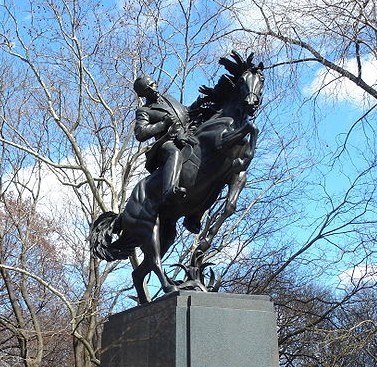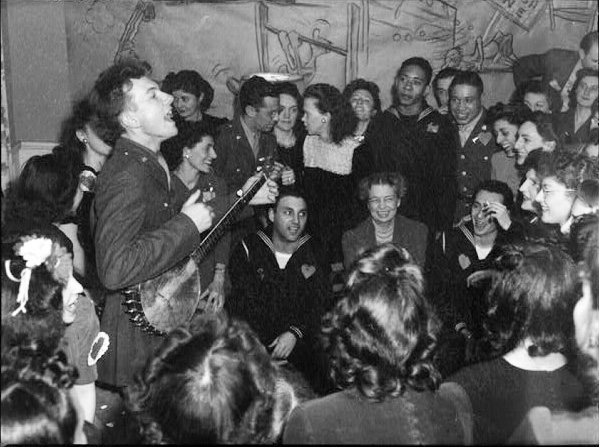|
Héctor Angulo
Héctor Angulo (Santa Clara, Cuba, Santa Clara, Cuba, 1932 – 2018) was a Cuban composer who combined in his works the result of deep studies about Afro-Cuban folklore and the most modern techniques of musical composition.Angulo, Héctor: Orovio, Helio: Cuban Music from A to Z, Duke University Press, Durham, U. S., 2004 Academic background Héctor Angulo began his musical studies in Santa Clara and concluded in Havana, where he was instructed by professors Zenaida Romeu, Serafín Pró and Julián Orbón.Angulo (Rodríguez), Héctor: Victoria Eli Rodríguez: Oxford Music Online: https://oxfordindex.oup.com/view/10.1093/gmo/9781561592630.article.46048 Angulo studied Architecture during four years at the University of Havana. In 1959 he attended a summer course in Tanglewood, United States, and at a later time, during that same year, he received a grant to study at the Manhattan School of Music in New York, where he stayed for the next three years. Angulo returned to Cuba in 1964, whe ... [...More Info...] [...Related Items...] OR: [Wikipedia] [Google] [Baidu] |
Santa Clara, Cuba
Santa Clara is the capital city of the Cuban province of Villa Clara. It is centrally located in the province and Cuba. Santa Clara is the fifth-most populous Cuban city, with a population of nearly 245,959. History Santa Clara was founded by 175 people on 15 July 1689. 138 of them represented two large families already living in the area, who owned land next to the new city. The other 37 came from seven other families and included a priest and governor, all originating in the coastal city of San Juan de los Remedios. The population of Remedios had to choose between leaving their city, constantly being besieged by pirates, or staying. While most decided to stay, 37 people traveled south to the interior. On 1 June 1689, they arrived at a hill, joining two other families already present at the site. According to tradition, a mass was celebrated under a tamarind tree and Santa Clara was founded. Since then, the place under the tree has been known as ''Loma del Carmen'' (). ... [...More Info...] [...Related Items...] OR: [Wikipedia] [Google] [Baidu] |
Guajira Guantanamera
"" (; ) is a Cuban patriotic song, which uses a poem from the collection '' Simple Verses'', by the Cuban poet José Martí, for the lyrics. It is an expression of love for Cuba and of solidarity with the poor people of the world. The official writing credits have been given to Joseíto Fernández, who first popularized the song on radio as early as 1929 (although it is unclear when the first release as a record occurred). In 1966, a version by American vocal group the Sandpipers, based on an arrangement by the Weavers from their May 1963 Carnegie Hall Reunion concert, became an international hit. The song has notably been covered or interpreted by Celia Cruz, Compay Segundo and Wyclef Jean. Music The music for the song is sometimes also attributed to Joseíto Fernández, who claimed to have written it at various dates (consensus puts 1929 as its year of origin), and who used it regularly in one of his radio programs. Some claim that the song's structure actually came from Herm ... [...More Info...] [...Related Items...] OR: [Wikipedia] [Google] [Baidu] |
Latin Music Composers
Latin ( or ) is a classical language belonging to the Italic branch of the Indo-European languages. Latin was originally spoken by the Latins in Latium (now known as Lazio), the lower Tiber area around Rome, Italy. Through the expansion of the Roman Republic, it became the dominant language in the Italian Peninsula and subsequently throughout the Roman Empire. It has greatly influenced many languages, including English, having contributed many words to the English lexicon, particularly after the Christianization of the Anglo-Saxons and the Norman Conquest. Latin roots appear frequently in the technical vocabulary used by fields such as theology, the sciences, medicine, and law. By the late Roman Republic, Old Latin had evolved into standardized Classical Latin. Vulgar Latin refers to the less prestigious colloquial registers, attested in inscriptions and some literary works such as those of the comic playwrights Plautus and Terence and the author Petronius. While often c ... [...More Info...] [...Related Items...] OR: [Wikipedia] [Google] [Baidu] |
2018 Deaths
This is a list of lists of deaths of notable people, organized by year. New deaths articles are added to their respective month (e.g., Deaths in ) and then linked below. 2025 2024 2023 2022 2021 2020 2019 2018 2017 2016 2015 2014 2013 2012 2011 2010 2009 2008 2007 2006 2005 2004 2003 2002 2001 2000 1999 1998 1997 1996 1995 1994 1993 1992 1991 1990 1989 1988 1987 1986 Earlier years ''Deaths in years earlier than this can usually be found in the main articles of the years.'' See also * Lists of deaths by day * Deaths by year (category) {{DEFAULTSORT:deaths by year ... [...More Info...] [...Related Items...] OR: [Wikipedia] [Google] [Baidu] |
1932 Births
Events January * January 4 – The British authorities in India arrest and intern Mahatma Gandhi and Vallabhbhai Patel. * January 9 – Sakuradamon Incident (1932), Sakuradamon Incident: Korean nationalist Lee Bong-chang fails in his effort to assassinate Emperor Hirohito of Japan. The Kuomintang's official newspaper runs an editorial expressing regret that the attempt failed, which is used by the Japanese as a pretext to attack Shanghai later in the month. * January 22 – The 1932 Salvadoran peasant uprising begins; it is suppressed by the government of Maximiliano Hernández Martínez. * January 24 – Marshal Pietro Badoglio declares the end of Libyan resistance. * January 26 – British submarine aircraft carrier sinks with the loss of all 60 onboard on exercise in Lyme Bay in the English Channel. * January 28 – January 28 incident: Conflict between Japan and China in Shanghai. * January 31 – Japanese warships arrive in Nanking. February * February 2 ** A general ... [...More Info...] [...Related Items...] OR: [Wikipedia] [Google] [Baidu] |
Music Of Cuba
The music of Cuba, including its instruments, performance, and dance, comprises a large set of unique traditions influenced mostly by west African and European (especially Spanish) music. Due to the syncretic nature of most of its genres, Cuban music is often considered one of the richest and most influential regional music in the world. For instance, the son cubano merges an adapted Spanish guitar (tres), melody, harmony, and lyrical traditions with Afro-Cuban percussion and rhythms. Almost nothing remains of the original native traditions, since the native population was exterminated in the 16th century. Since the 19th century, Cuban music has been hugely popular and influential throughout the world. It has been perhaps the most popular form of regional music since the introduction of recording technology. Cuban music has contributed to the development of a wide variety of genres and musical styles around the globe, most notably in Latin America, the Caribbean, West Africa, and ... [...More Info...] [...Related Items...] OR: [Wikipedia] [Google] [Baidu] |
Lydia Cabrera
Lydia Cabrera (May 20, 1899, in Havana, Cuba – September 19, 1991, in Miami, Florida) was a Cuban independent ethnographer, writer, and literary activist. She was an authority on Santería and other Afro-Cuban religions. During her lifetime she published over one hundred books; little of her work is available in English. Her most important book is ''El Monte'' (Spanish: "The Wilderness"), which was the first major ethnographic study of Afro-Cuban traditions, herbalism and religion. First published in 1954, the book became a "textbook" for those who practice Lukumi (orisha religion originating from the Yoruba and neighboring ethnic groups) and Palo Monte (a central African faith) both religions reaching the Caribbean through enslaved Africans. Her papers and research materials were donated to the Cuban Heritage Collection - the largest repository of materials on or about Cuba located outside of Cuba - forming part of the library of the University of Miami. A section in Guillerm ... [...More Info...] [...Related Items...] OR: [Wikipedia] [Google] [Baidu] |
José Martí
José Julián Martí Pérez (; 28 January 1853 – 19 May 1895) was a Cuban nationalism, nationalist, poet, philosopher, essayist, journalist, translator, professor, and publisher, who is considered a Cuban national hero because of his role in the liberation of his country from Spain. He was also an important figure in Latin American literature. He was a political activist and is considered an important philosopher and Political philosophy, political theorist. Through his writings and political activity, he became a symbol of Cuba's bid for independence from the Spanish Empire in the 19th century and is referred to as the "Apostle of Cuban Independence". From adolescence on, he dedicated his life to the promotion of liberty, political independence for Cuba, and intellectual independence for all Hispanic America, Spanish Americans; his death was used as a cry for Cuban independence from Spain by both the Cuban revolutionaries and those Cubans previously reluctant to start a revolt ... [...More Info...] [...Related Items...] OR: [Wikipedia] [Google] [Baidu] |
Pete Seeger
Peter Seeger (May 3, 1919 – January 27, 2014) was an American singer, songwriter, musician, and social activist. He was a fixture on nationwide radio in the 1940s and had a string of hit records in the early 1950s as a member of The Weavers, notably their recording of Lead Belly's "Goodnight, Irene", which topped the charts for 14 weeks in 1950. Members of the Weavers were blacklisted during the McCarthyism, McCarthy Era. In the 1960s, Seeger re-emerged on the public scene as a prominent singer of protest song, protest music in support of nuclear disarmament, international disarmament, civil rights, workers' rights, Counterculture of the 1960s, counterculture, environmentalism, environmental causes, and ending the Vietnam War. Among the prolific songwriter's best-known songs are "Where Have All the Flowers Gone?" (with additional lyrics by Joe Hickerson), "If I Had a Hammer (The Hammer Song)" (with Lee Hays of the Weavers), "Kisses Sweeter than Wine" (also with Hays), and ... [...More Info...] [...Related Items...] OR: [Wikipedia] [Google] [Baidu] |
Cuba
Cuba, officially the Republic of Cuba, is an island country, comprising the island of Cuba (largest island), Isla de la Juventud, and List of islands of Cuba, 4,195 islands, islets and cays surrounding the main island. It is located where the northern Caribbean Sea, Gulf of Mexico, and Atlantic Ocean meet. Cuba is located east of the Yucatán Peninsula (Mexico), south of both Florida and the Bahamas, west of Hispaniola (Haiti/Dominican Republic), and north of Jamaica and the Cayman Islands. Havana is the largest city and capital. Cuba is the List of countries and dependencies by population, third-most populous country in the Caribbean after Haiti and the Dominican Republic, with about 10 million inhabitants. It is the largest country in the Caribbean by area. The territory that is now Cuba was inhabited as early as the 4th millennium BC, with the Guanahatabey and Taino, Taíno peoples inhabiting the area at the time of Spanish colonization of the Americas, Spanish colonization ... [...More Info...] [...Related Items...] OR: [Wikipedia] [Google] [Baidu] |





